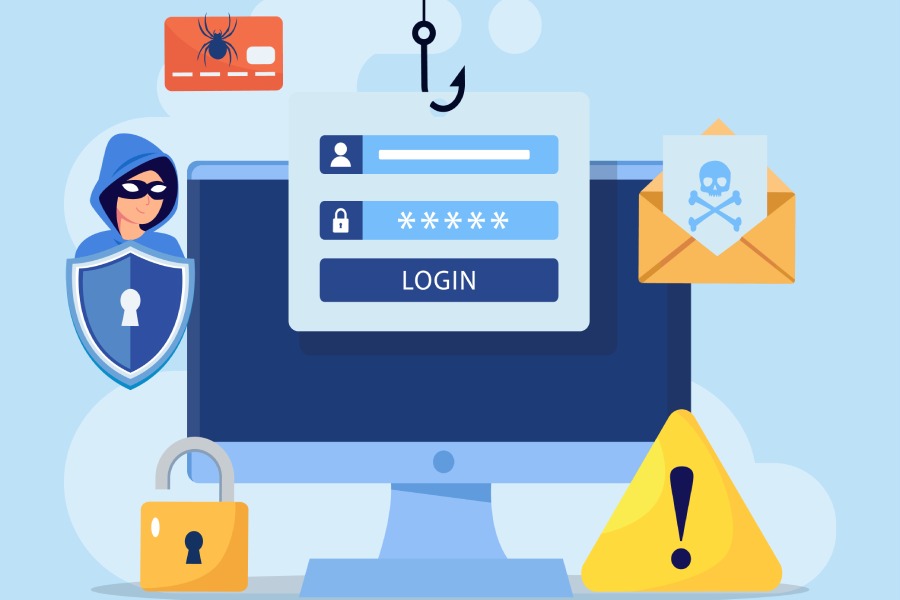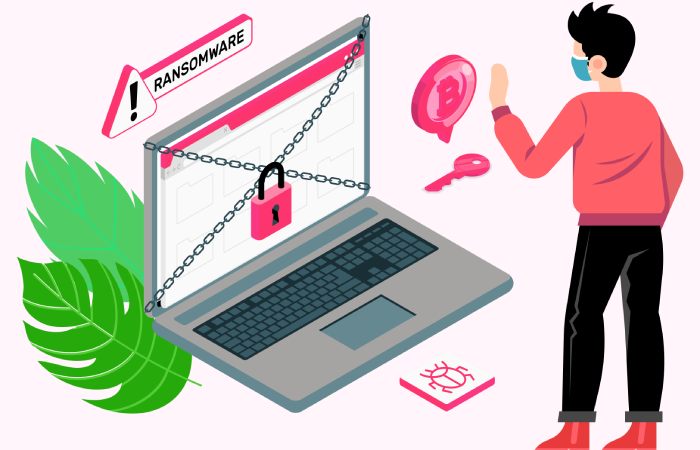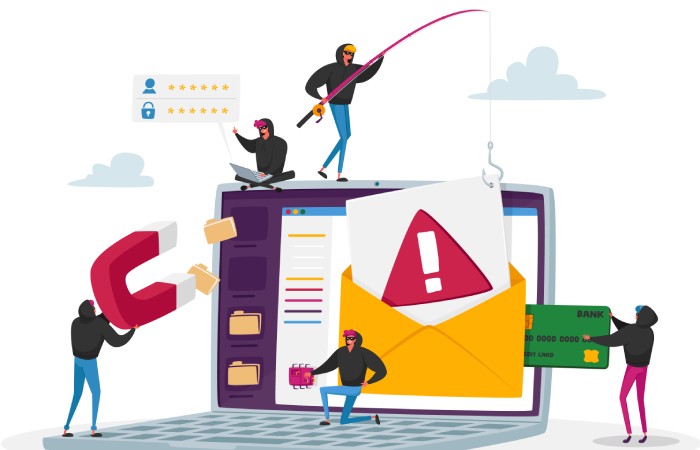As malicious actors develop increasingly sophisticated attack vectors, enterprises and organizations need to draw a strong line of defense against such threats. While phishing happens to be one of the oldest tools to inflict cyberattacks, TrickBot phishing is a comparatively newer malware that first gained visibility as a simple banking Trojan. Over the years, TrickBot has evolved significantly to remain a threat to organizations. Its adaptive and modular nature makes it one of the most significant attack vectors. The latest version can check the screen resolution of the targeted devices to look for virtual machines. Nevertheless, you can combat the challenge with proper anti-phishing solutions in place, along with training your employees.
What is TrickBot, And How Does it Work?
TrickBot is a rather sophisticated malware that malicious actors primarily deploy for two purposes:
- Spreading Conti, Ryuk, or other ransomware
- Spreading malware to steal email data, credentials, and point-of-sale data
In recent months, cyber adversaries have also used this TrickBot to download banking malware like Emotet to steal sensitive data related to finances. This fact underlines the need for adopting robust anti-phishing and anti-ransomware solutions for your organization. With consistent evolution, TrickBot looks much more menacing than regular malware. Being a Trojan, it disguises itself as legitimate software to carry out data thefts. Moreover, it can inject additional malware into the system.
The initial delivery mechanism comes from malspam campaigns that can convince the victims to download the malware through attachments or links. Next, it tampers with the SMB (Server Message Block) Protocol and continues to spread through the network laterally. Currently, the adversaries are fooling the victims with phishing techniques through social engineering. Usually, the malicious actors use MS Word as the attachment format during the attacks. It typically operates as a MiTB (man-in-the-browser) agent to steal the users’ banking credentials or credit card information.
What Are The Consequences of A TrickBot Attack?
TrickBot attack victims end up compromising their accounts. In most cases, the consequences are typically similar. Once the attackers take over the accounts, they demand a ransom. In exchange, they promise to release the files and accounts. Moreover, ransomware can rapidly spread from the infected devices to other files. Apart from the threats outlined above, TrickBot can exfiltrate data, host enumeration, or mine cryptocurrencies. Since email happens to be the most effective channel for attackers to deliver phishing attacks, it’s imperative to seek email phishing protection.
Viable Means to Draw Your Line of Defense Against TrickBot
Organization heads need to be strictly vigilant to detect possible TrickBot infections. With proper phishing email protection in place, you can thwart the malware significantly. Besides, you should know the signs of potential attacks, such as unrecognized login attempts to different accounts online. A change in your network infrastructure should tell you that a possible attack will likely happen. However, it might be quite challenging to detect the infection, given that TrickBot is a Trojan. By installing advanced anti-malware tools, you can mitigate the damage the earliest.
Here are some highly recommended measures to secure yourself against TrickBot attacks.
- Install a robust Trojan scanner to secure your system against possible attacks.
- When you check spam emails, be cautious. Do not open dubious-looking attachments or emails.
- Make sure that none of your employees give their consent to activate macros.
- Update your software on all the systems to bolster your stand against malware.
- Purchase software from the official providers and not any third-party vendor when installing the software. While downloading, opt out of the add-on packages.
Trojans can infect any system regardless of the precautions you take. Rather than risking your system, it makes sense to have proper data backups in place. Besides, you can consult a professional for support regarding anti-phishing mechanisms.
What Can You Do if You Have Already Faced a TrickBot Attack?
Organization leaders need a quick and efficient response following a TrickBot attack to prevent it from turning into an expensive disaster. First, you need to stop the malware from spreading laterally in your system and the exfiltration of information. For this, you need to adhere to the following guidelines.
- Disable the internet access at the compromised server, site, or endpoint.
- Quarantine the affected system and shut it down, disconnecting it from the entire setup.
- Block any SMB communication between the systems and closely monitor the same.
- Clean the VLANs and take remedial measures, such as resetting passwords and deploying host-based intrusion protection.
- Take care not to log into the compromised information systems through a shared local administrator account or domain. Remember, TrickBot can easily steal your access credentials.
Training Your Employees: How Effective Would it be to Combat TrickBot Phishing?
In the digitized business infrastructure, no organization can overlook employee training as an effective means to combat phishing attacks. Through periodic refresher training sessions, you can significantly mitigate the risk by helping your employees stay abreast with the threats. Remember, unsuspecting staff can activate the malware inadvertently. When it comes to thwarting any kind of cyberattack, including ransomware, phishing, or social engineering, timely training eliminates the possibility of human errors. Your employees should be stringent in their attitudes to detect suspicious activities, given that they always remain the weakest link in your security mechanism.
You need to mix the components of the training programs judiciously. A calculated blend of virtual training, classroom training, newsletters, and webinars can leverage your human line of defense against TrickBot. Remember to include security quizzes and email reminders in your training methods.
Final Words
Users first witnessed TrickBot phishing in 2016, and it has already caused significant disruptions to organizations worldwide. Considering your network’s vulnerability, you need to take guard against the threat. Most importantly, you need to train up unsuspecting employees in your organization. The TrickBot threat is here to stay, implying that you need to be vigilant and step up your defense mechanism against the malware. It’s perfect for seeking professional support if needed so that you don’t need to compromise your organization’s assets and reputation in any case.



